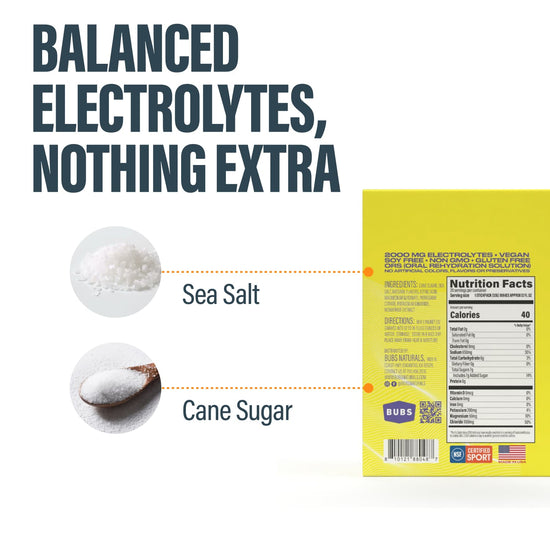Table of Contents
- The Chemistry of Potassium Nitrate
- Understanding Electrolytes
- Why Potassium Nitrate is Classified as an Electrolyte
- Applications of Potassium Nitrate
- Conclusion
- FAQ
It's not every day that a compound can boast both agricultural benefits and a critical role in our biological systems. Potassium nitrate, also known as saltpeter, is a fascinating compound that has sparked interest in fields ranging from agriculture to pharmacology. But have you ever wondered why potassium nitrate is classified as an electrolyte? This question dives deep into the chemistry of ionic compounds and their behavior in solutions, revealing much about the fundamental nature of electricity and life itself.
In essence, electrolytes are substances that, when dissolved in water, dissociate into ions and can conduct electricity. Understanding the classification of potassium nitrate as an electrolyte is crucial, not just for students preparing for exams, but for anyone interested in chemistry, nutrition, and the science behind hydration and bodily functions. By the end of this blog post, we will explore the reasons behind this classification, the science of electrolytes, and the implications of potassium nitrate in our everyday lives.
This article will cover:
- The basic chemistry of potassium nitrate
- The definition and importance of electrolytes
- How potassium nitrate fulfills the criteria to be classified as an electrolyte
- The implications of potassium nitrate in various applications, including health and wellness
- A brief look at other common electrolytes and their roles
By integrating these elements, we aim to provide a comprehensive understanding of potassium nitrate and its significance in the realm of electrolytes. So, let’s embark on this scientific journey together and explore why potassium nitrate holds an essential place in both chemistry and our daily lives.
The Chemistry of Potassium Nitrate
Potassium nitrate (KNO₃) is a chemical compound made up of potassium (K), nitrogen (N), and oxygen (O). It is an ionic compound that forms a crystalline structure, which is why it is often found in nature as a solid mineral. But what makes potassium nitrate particularly interesting is its ability to dissolve in water and release ions, which is a key characteristic of electrolytes.
The Structure of Potassium Nitrate
To understand potassium nitrate's behavior as an electrolyte, we first need to examine its molecular structure. It consists of:
- Potassium ions (K⁺): These are positively charged ions that contribute to the compound's electrochemical properties.
- Nitrate ions (NO₃⁻): These are negatively charged ions that balance the positive charge of potassium.
When potassium nitrate is placed in water, its ionic bonds break apart, allowing the compound to dissociate into its constituent ions. This process is essential for its classification as an electrolyte.
Dissociation in Water
When potassium nitrate dissolves in water, the following reaction occurs:
[ \text{KNO}_3 (s) \rightarrow \text{K}^+ (aq) + \text{NO}_3^- (aq) ]
This dissociation signifies that potassium nitrate releases ions into the solution, which is the fundamental characteristic of electrolytes. The presence of these free ions allows the solution to conduct electricity.
Understanding Electrolytes
Definition and Importance
Electrolytes are substances that, when dissolved in a solvent (usually water), dissociate into ions capable of conducting electricity. They play a crucial role in various biological and chemical processes, such as:
- Maintaining fluid balance: Electrolytes help regulate the balance of fluids in and around cells.
- Nerve function: They are essential for transmitting electrical signals in the nervous system.
- Muscle function: Electrolytes enable muscle contractions and relaxation.
Types of Electrolytes
Electrolytes can be categorized into two main types:
- Strong electrolytes: These substances completely dissociate into their ions in solution, resulting in high conductivity. Examples include sodium chloride (NaCl) and potassium nitrate (KNO₃).
- Weak electrolytes: These partially dissociate in solution, leading to lower conductivity. An example is acetic acid (CH₃COOH).
The Role of Electrolytes in Health
Electrolytes are vital for maintaining homeostasis in the body. They regulate nerve and muscle function, hydration, blood pH, and the pressure of the blood. Therefore, having an adequate intake of electrolytes, particularly potassium, is essential for overall health. Foods rich in potassium include bananas, oranges, and leafy greens, and potassium nitrate can serve as a source when consumed in moderation.
Why Potassium Nitrate is Classified as an Electrolyte
Now that we have established what electrolytes are and their significance, let’s delve into why potassium nitrate fits this classification.
Ion Release in Solution
As discussed earlier, potassium nitrate dissolves in water to release potassium and nitrate ions. This is the most critical factor for its classification as an electrolyte. Unlike molecular compounds that do not dissociate into ions, potassium nitrate’s ability to break down into K⁺ and NO₃⁻ in an aqueous environment allows it to conduct electricity.
Conductivity
Potassium nitrate demonstrates conductivity in solution, which is another key criterion for electrolytes. When dissolved, the mobility of the released ions facilitates the flow of electrical current. This conductivity is essential for various applications, including its use in fertilizers and as a food preservative.
Comparison with Other Electrolytes
To further solidify our understanding, let’s briefly compare potassium nitrate with some common electrolytes:
- Sodium Chloride (NaCl): Like potassium nitrate, sodium chloride is a strong electrolyte that fully dissociates into ions in solution, contributing to its ability to conduct electricity.
- Calcium Carbonate (CaCO₃): This is a weak electrolyte that does not fully dissociate, resulting in lower conductivity compared to potassium nitrate.
Applications of Potassium Nitrate
Potassium nitrate is not just a laboratory curiosity; it has numerous practical applications across various fields.
Agriculture
Potassium nitrate is widely used as a fertilizer due to its high solubility and nutrient content. It helps in regulating plant growth, improving the quality of fruits and vegetables, and enhancing overall crop yield. Its role as an electrolyte in soil solutions aids in nutrient uptake by plants, making it a critical component in agricultural practices.
Food Preservation
In the food industry, potassium nitrate is used as a preservative. Its ability to inhibit bacterial growth makes it valuable in curing meats and storing food products, contributing to food safety and longevity.
Health and Nutrition
While potassium nitrate is not commonly consumed directly, its potassium content is beneficial. Potassium is essential for maintaining healthy blood pressure, proper muscle function, and nerve signaling. Understanding the role of potassium in our diet can help us make informed nutritional choices.
Scientific Research
Potassium nitrate is used in various chemical reactions and experiments, particularly in the study of ionic compounds and electrolytic properties. Its predictable behavior in solution makes it a popular choice in educational settings.
Conclusion
In summary, potassium nitrate is classified as an electrolyte primarily due to its ability to dissociate into ions when dissolved in water, facilitating electrical conductivity. This characteristic is crucial for understanding its role in biological systems, agricultural practices, and food preservation. By examining potassium nitrate's properties and applications, we see the interconnectedness of chemistry with everyday life.
As we enhance our understanding of electrolytes, it becomes clear that they are not just scientific curiosities but essential components of our health and environment. Whether through maintaining hydration or supporting agricultural productivity, potassium nitrate exemplifies the practical applications of chemistry in our world.
FAQ
What are electrolytes?
Electrolytes are substances that dissociate into ions in solution and can conduct electricity. They play vital roles in bodily functions, including fluid balance, nerve signaling, and muscle contractions.
How does potassium nitrate function in agriculture?
Potassium nitrate serves as a potent fertilizer, providing essential potassium and nitrogen to plants. It improves crop yield and quality by facilitating nutrient absorption in the soil.
Is potassium nitrate safe for consumption?
While potassium nitrate is used in food preservation, it should be consumed in moderation. High intake can have adverse health effects, so it’s important to follow guidelines and consult health professionals regarding dietary needs.
What are other common electrolytes?
Common electrolytes include sodium chloride (table salt), calcium chloride, and magnesium sulfate. Each has different properties and applications in various fields.
Can I get potassium from food sources?
Yes, potassium is abundant in many foods, such as bananas, oranges, beans, and leafy greens. A balanced diet can provide adequate potassium for most individuals.
Written by:
Bubs Naturals

Hydrate or Die
When you’re sweating hard—whether it’s from a tough workout, a long day in the sun, or just life—your body needs more than water to stay balanced and energized.
Hydrate or Die® delivers 2,000 mg of electrolytes in every serving to help you rehydrate faster, fight off fatigue, and keep going strong. That includes the right mix of sodium, potassium, and magnesium to support muscle function, prevent cramps, and maintain energy levels.
With a small dose of natural cane sugar to speed up absorption, this clean, easy-to-use powder is made for real performance—not just flavor.
Starts at $29.60
Shop

